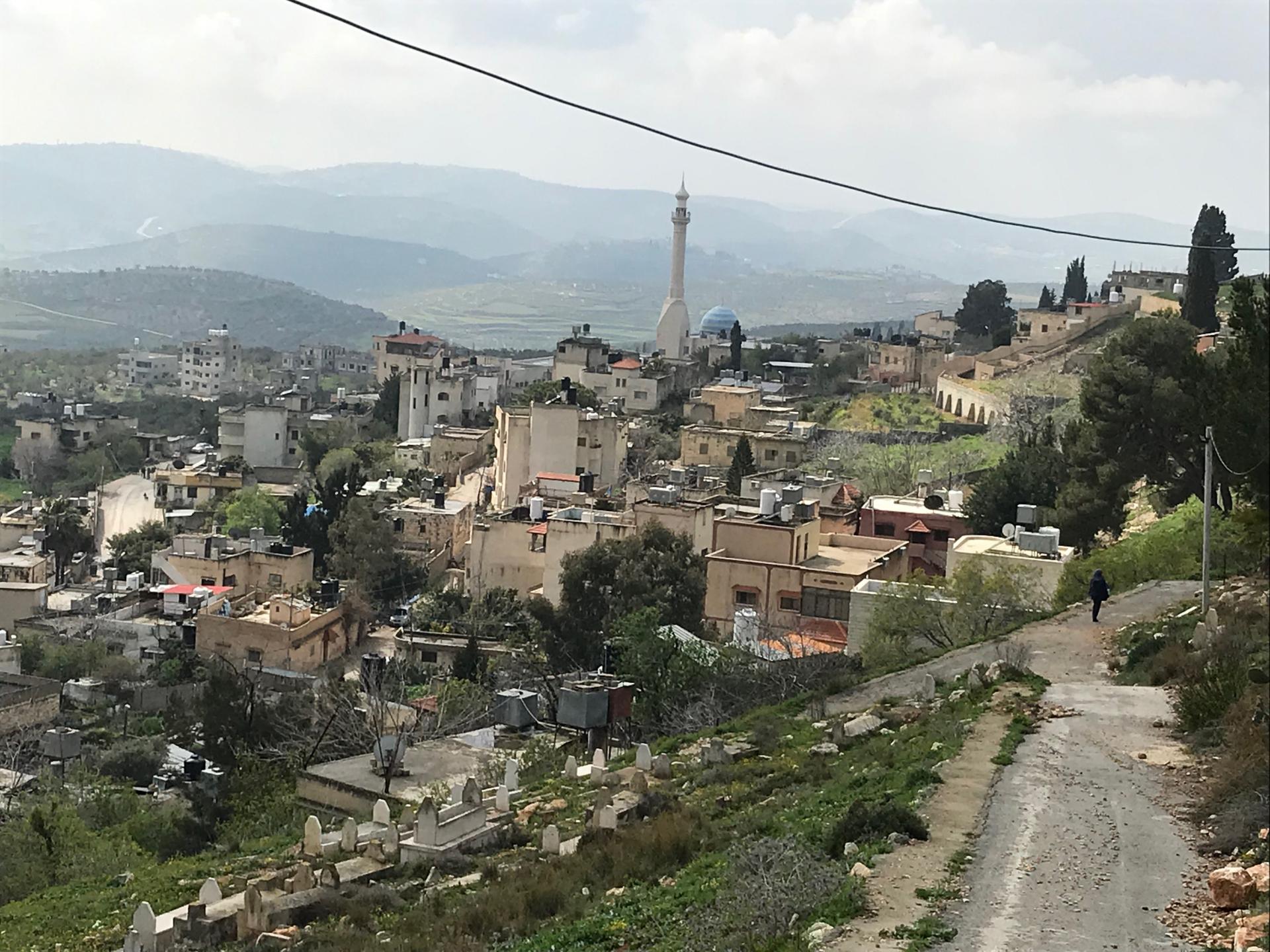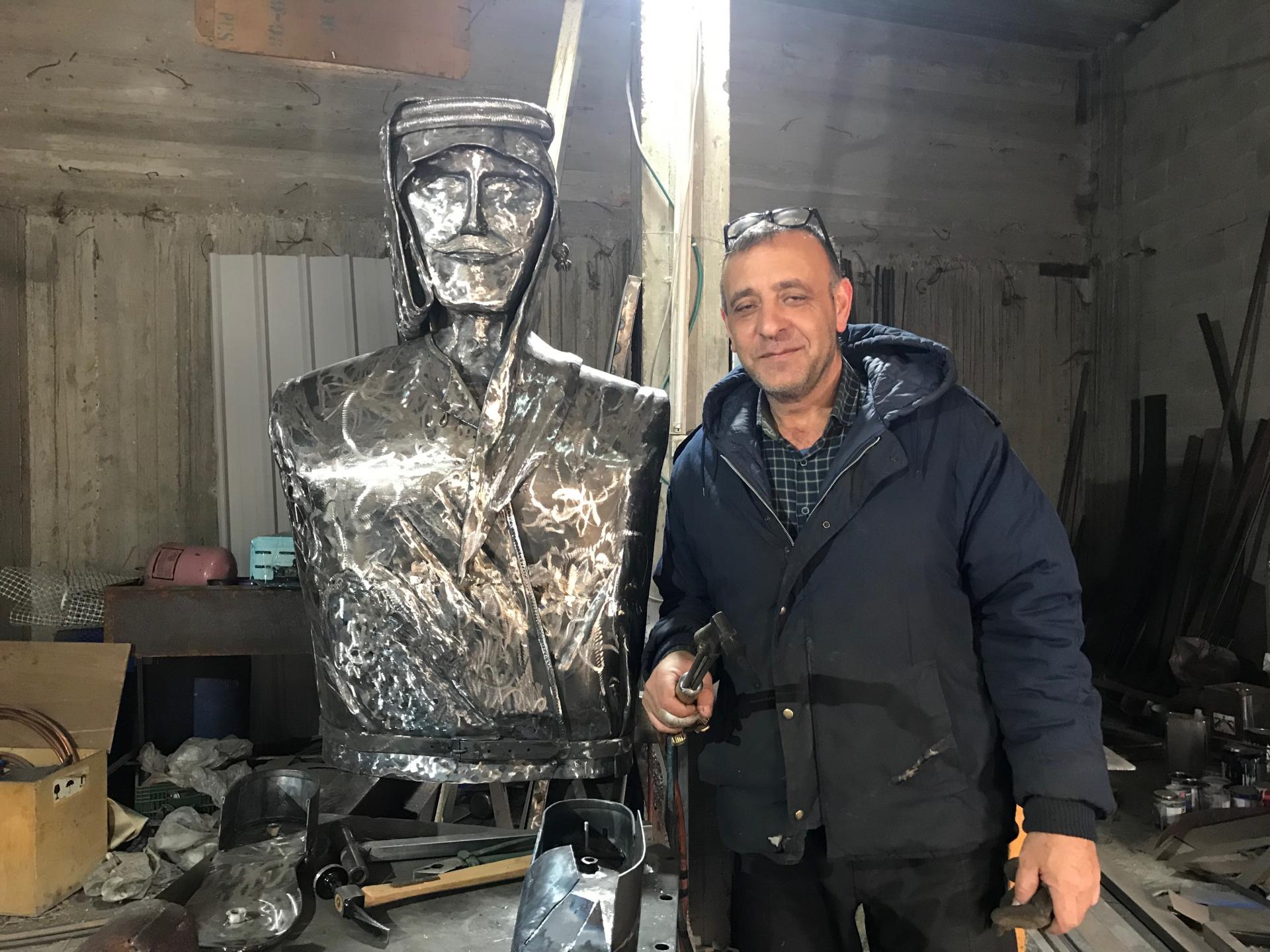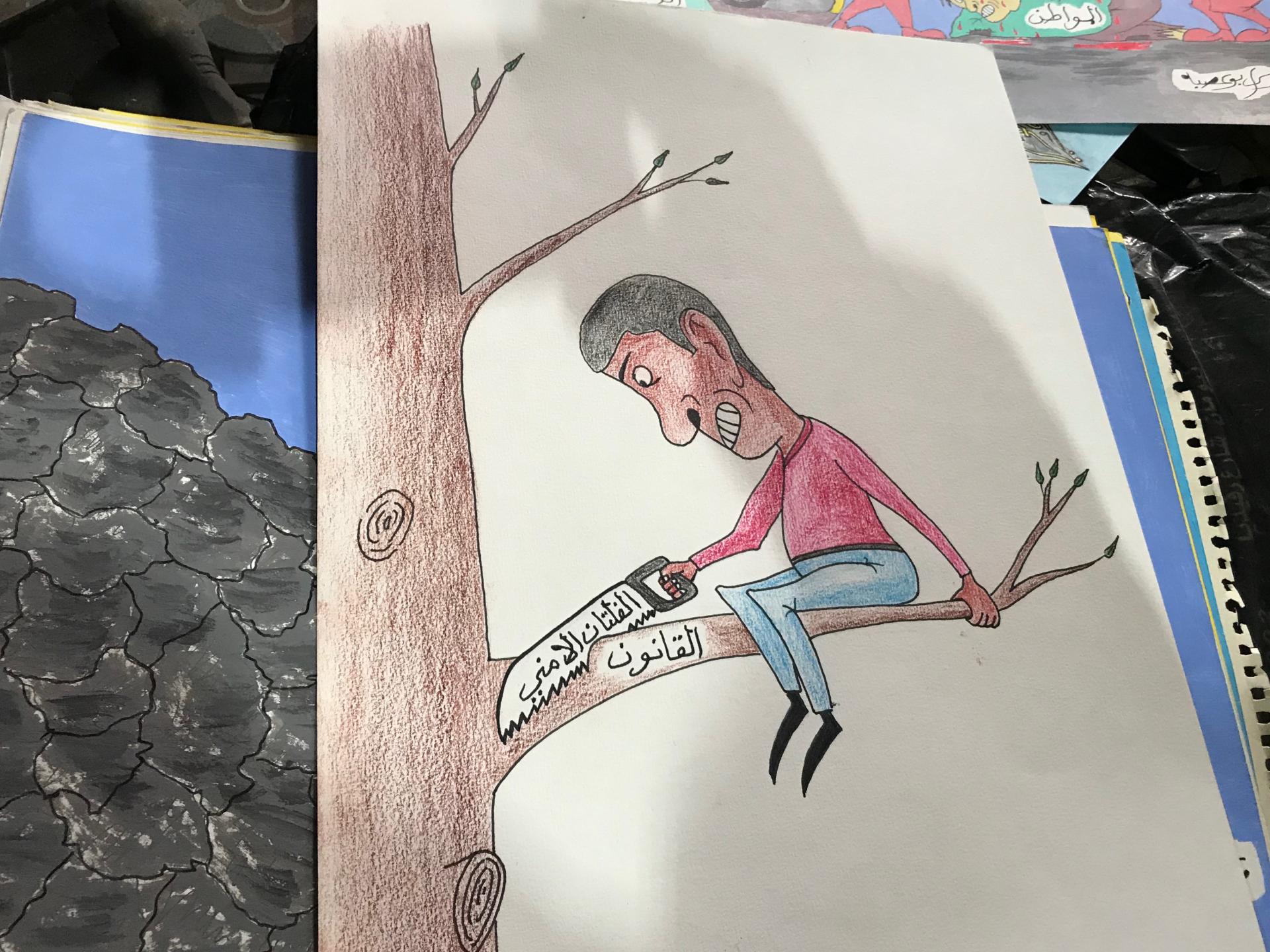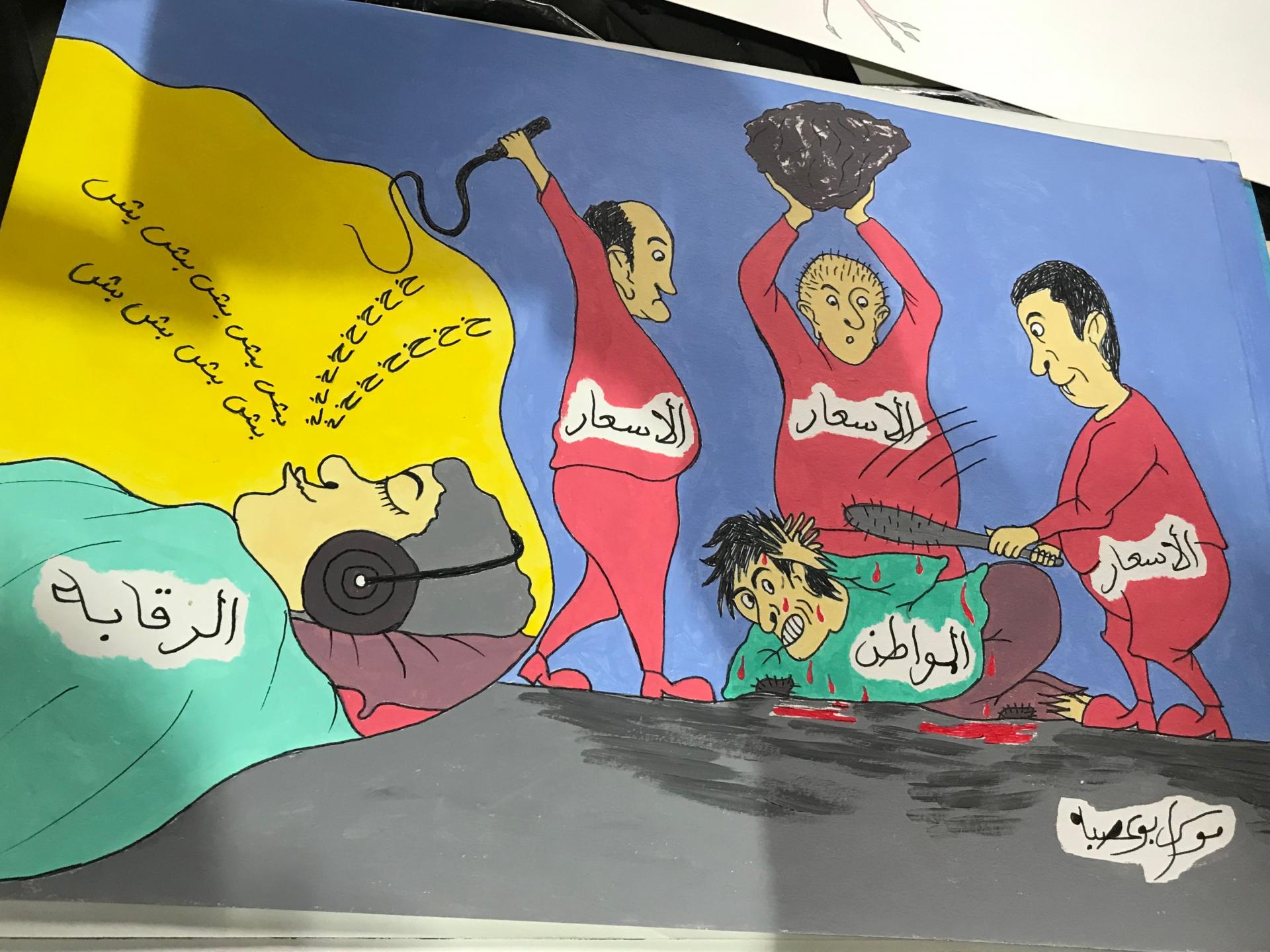Visit to Burqah village, in connection with Makamim in the area


Visit to the Burqah village council
Following Gideon Levy’s article on Homesh settlement that was never evacuated, we checked maps and discovered three nearby Maqamim that we wanted to study. We headed for the Shomron, passing through roads familiar to us from the days of checkpoints Beit Iba, Deir Sharaf, and arrived at Kfar Burqah. Our friend S., a local inhabitant, arranged for us a meeting with the village head, to hear about the maqamim.
After we introduced ourselves and Machsomwatch, we asked the Head to tell us about the maqamim and about problems with the settlers. In 1977 Burkah land was confiscated and Homesh was established, remaining there until 2005. Then it was decided to remove the settlement. There were 50 settlers and maintaining the settlement was a burden for the army. Anyone exiting the settlement was accompanied by a soldier. At the settlement border there were regular demonstrations by the locals. In the first and second Intifadas, Burkah suffered 6 dead and scores of wounded. Today the village has 5000 inhabitants, many having left for Jordan and abroad. After the evacuation, settlers continued to arrive from all parts of the West Bank. They would come in thousands, climbing the hill where Homesh stood. Now they come only on [Jewish} holidays and on anniversaries of the evacuation. But every day 2-3 hilltop youths arrive. Why do they come? The Palestinians answer: “ to assert their ownership of the area.” And this in spite of the evacuation and the High Court decision. The Head shows us the permit that the area was open to the Palestinians, apart from Homesh itself.
Kfar Burqah owned some 18,600 dunams. Of these about 1,500 were confiscated for Homesh and another 50 for Shavei Shomron. In 2008, three years after the evacuation, Palestinians planted 120 dunams of almonds and olives in the area that was once Homesh, in the presence of the Palestinian Minister of Agriculture. Settlers who arrived on the evacuation day anniversary or other holidays uprooted 80 per cent of these trees. After the evacuation the area was declared a ‘military area’ and Palestinians who do not own land there are prohibited from passing there to reach their own lands to work them. About 50% of the inhabitants are farmers, mainly growing olive; 20% work in Israel; 30% work for the Palestinian Authority. Unmarried people do not get permits to work in Israel, but also some married people do not get permits for security reasons.
Water - there are three springs in the village which supply 30% of their needs. The rest they get from Mekorot. Till 2017 they indeed had problems of water supply. Then the village was divided into 6 areas and, each time, water was supplied to one of them. Now the problem has been solved. From 2010 till 2018[??] water was bought from Mekorot in containers, now water is piped from nearby Beit Iba. In rainy years water is stored in two large containers/reservoires[?] – one for storage, the second for distribution.
Electricity – according to the Head, electricity is regularly supplied by the electricity company, although when we arrived there was an electricity outage. Farmers whose fields are near Homesh go to work at 6, before settlers who arrive every day can attack them. Three months ago there visited inhabitants, council members and representatives of Yesh Din, and found in the place 3 caravans and a giant tent, containing clothes, food and equipment. Now there is negotiation with the army to have them cleared. If unsuccessful, they will appeal to the High Court.
In the past ten months there have been three serious incidents between the villagers and the settlers. Two weeks ago the settlers attacked a shepherd at the edge of Burqah and beat him, threw stones at him and wounded him so severely that he was hospitalized. (See Gideon Levy’s article of 26.1.2019)
A year ago they noticed 5 kilometers away a man from Al-Pandakumiya[?], who they claimed intruded the area of Homesh. They rushed him, stripped and beat him. And another violent incident.
__________________________________________________
HHARETZ reports that the Ministry of Education has transferred 28 million shekels to the organization that finances illegal settlement in the northern West Bank, which has initiated crowd-funding projects to revive the ruins of the Homesh settlement. (Continues..)
__________________________________________________
The Maqamim in the area – Sheikh Abu Yezid, Al-Kubeibeh, Sheikh Shalah
Before the occupation there were guards on the maqamim who would repair and paint damage caused by weather. People would come on foot, light candles and pray. Then the maqamim were in the settlement area and now they are in a closed military area. They are said to date from the period of Salah a-Din. According to tradition, because they are on high places, the fires were also used for communication. Since the occupation they have fallen into ruin because there is no one to care for them.
When did they stop going to Abu Yezid? People go to work their fields, but not to the maqam. Concerning the nature reserve (Homesh reserve) there is no need to make special arrangements, but people don’t go out of fear of the settlers. In the end we didn’t go to the maqamim, because Kubeibeh is ‘caged’ inside Homesh area, while Sheikh Abu is inside the reserve and we had to walk 2 km in muddy soil. Sheikh Shalah (which means “torch”) was even further.
Burqah had been a political and military centre in Ottoman times and it has palaces and ancient buildings. They are now renovating the centre, in particular the market, with Belgian help. We were invited to celebrate with them the completion of the renovation in two months’ time. A master metalworker, at the initiative of the council Head, is creating a giant metal sculpture of a period figure, to stand at the entrance to the market. We visited the studio of the artist who had worked for the Authority but is now retired. He now works in iron, but in the past worked in stone. He now draws caricatures and we include some for enjoyment.


